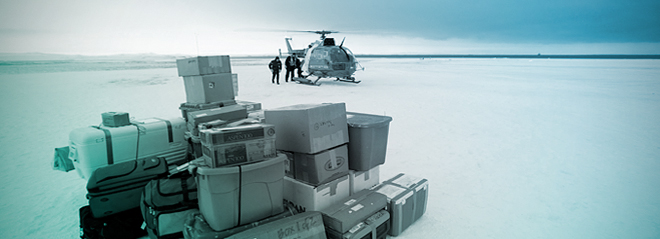|
|

|
|

|
|

|
|

Snow is not just frozen water. During its formation and precipitation, snow crystals incorporate atmospheric impurities. Snow composition therefore to some extent reflects the composition of the atmosphere. These impurities (aerosol particles, adsorbed and dissolved gases) are then transfered from the atmosphere to the surface. Snowmelt then transfers nutrients and pollutants to terrestrial and marine ecosystems. On ice caps and glaciers, snow turns into ice, whose composition can be used to reconstruct pas atmospheric compositions and biogeochemical cycles. In summary, one would study snow composition to answer (among others) the following questions :
- What is the relationship between snow and air compositions ?
- How do snow-atmosphere interactions modify snow and air compositions ?
- What is the role of the snow as a vector of nutrients/pollutants to ecosystems ?
- What is the relationship between snow and ice compositions ?
- How can information about past atmospheric compositions be extracted from ice cores ?
Our research activities include:
- The simultaneous monitoring of snow and air composition, in collaboration with international groups, to understand the composition of fresh snow.
- The deposition of aerosol species to snow, in particular sea salt in polar regions. This is also doen in collaboration with international groups.
- Laboratory studies of the interactions between some reactive trace gases and ice, to try to understand snow composition.





